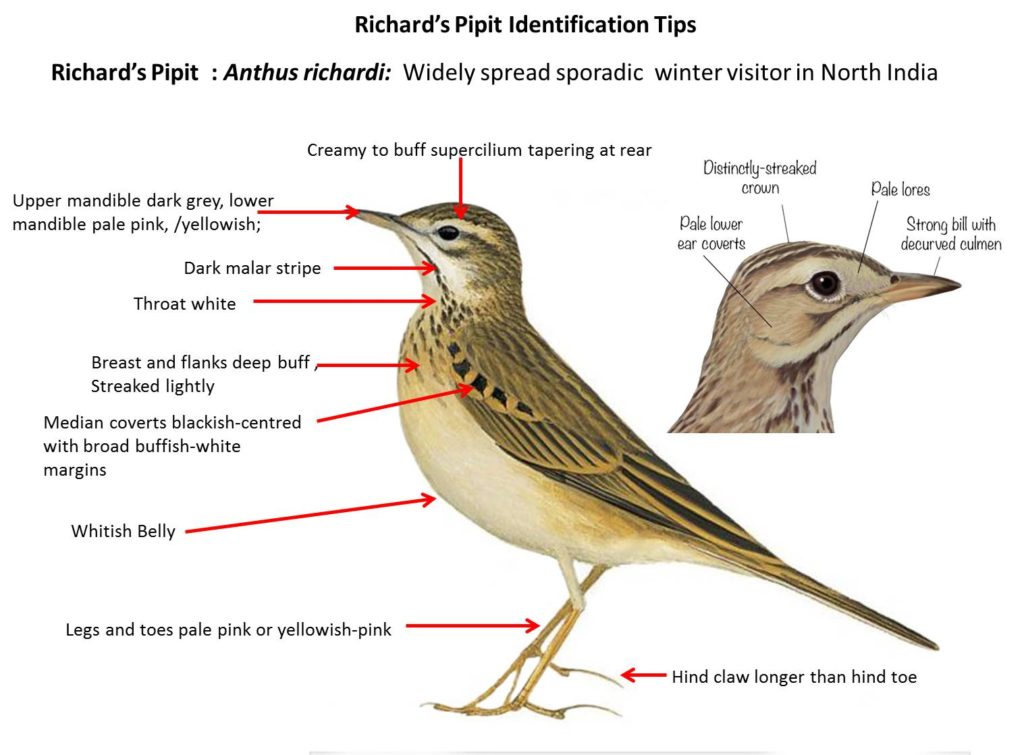Richard’s Pipit

Richard’s Pipit Anthus richardi
Etymology:
- Anthus : Based on Greek mythology. Anthus, son of Antinous and Hippodamia, was killed by his father’s horses and metamorphosed into a bird which imitated the neighing of horses but fled at their sight
- Richardi : Named after the French collector Richard (fl. 1815)
Distribution in India: Winter visitor in various parts of India.
Description: Size of 17–18 cm; wt. of 21–40 g. It is a large pipit with long, stout legs, long toes and a very long hind claw. The nominate race has long creamy to buff supercilium tapering at rear, pale cream-buff eyering and lores, occasionally darkish loral stripe; prominent dark malar stripe and patch, pale buff-brown patch on rear cheek; above parts are buff-brown to dun-brown and streaked blackish, lower back and rump are less streaked. The primaries, secondaries and primary coverts are dark brown with narrow white edges, tertials and secondary wing-coverts are tipped and edged rufous or buff, the greater coverts are paler with broad sandy-buff edges and tips, the median coverts are blackish-centered with broad buffish-white margins, the lesser coverts are sandy brown. The tail is blackish-brown, edges of T1 tinged rufous with broad buff-brown edging, T5 and T6 with outer web and much of distal inner web are white. The upper throat is white, lower throat, breast and flanks are deep buff, belly is white, band of fine blackish streaks across breast and upper flanks; underwing-coverts and axillaries are creamy buff to buff-grey; iris is dark brown; upper mandible is dark grey, lower mandible is pale pink, sometimes yellowish; legs and toes are pale pink or yellowish-pink, hind claw measures 14–22 mm and is longer than hind toe. Both the sexes are alike. The juvenile has unmarked pale lores, pale feather edges on upperparts giving scaly effect, two indistinct pale wingbars, is more sharply streaked below; pale edgings are lost by first winter.
Habitat: It is found in open country, steppe grassland, paddy fields, stubble fields and cultivations, edges of reservoirs and marshy areas. It is found up to 1800 m.
Food habits: It eats adult and larval insects like beetles and grasshoppers and seeds. It forages on the ground, picking terrestrial invertebrates. It is found along with grazing livestock feeding on insects disturbed by them.
Breeding habits: They breed in Apr–Jul in southern Siberia, Mongolia, parts of Central Asia and in northern, central and eastern China. Sings in descending display-flight. The nest is a large cup of coarse grass and roots, lined with finer material such as grasses and hair, built on ground among grass tufts, often in a depression. They lay a clutch of 3–4 eggs. The incubation and brood-feeding is done by both sexes.